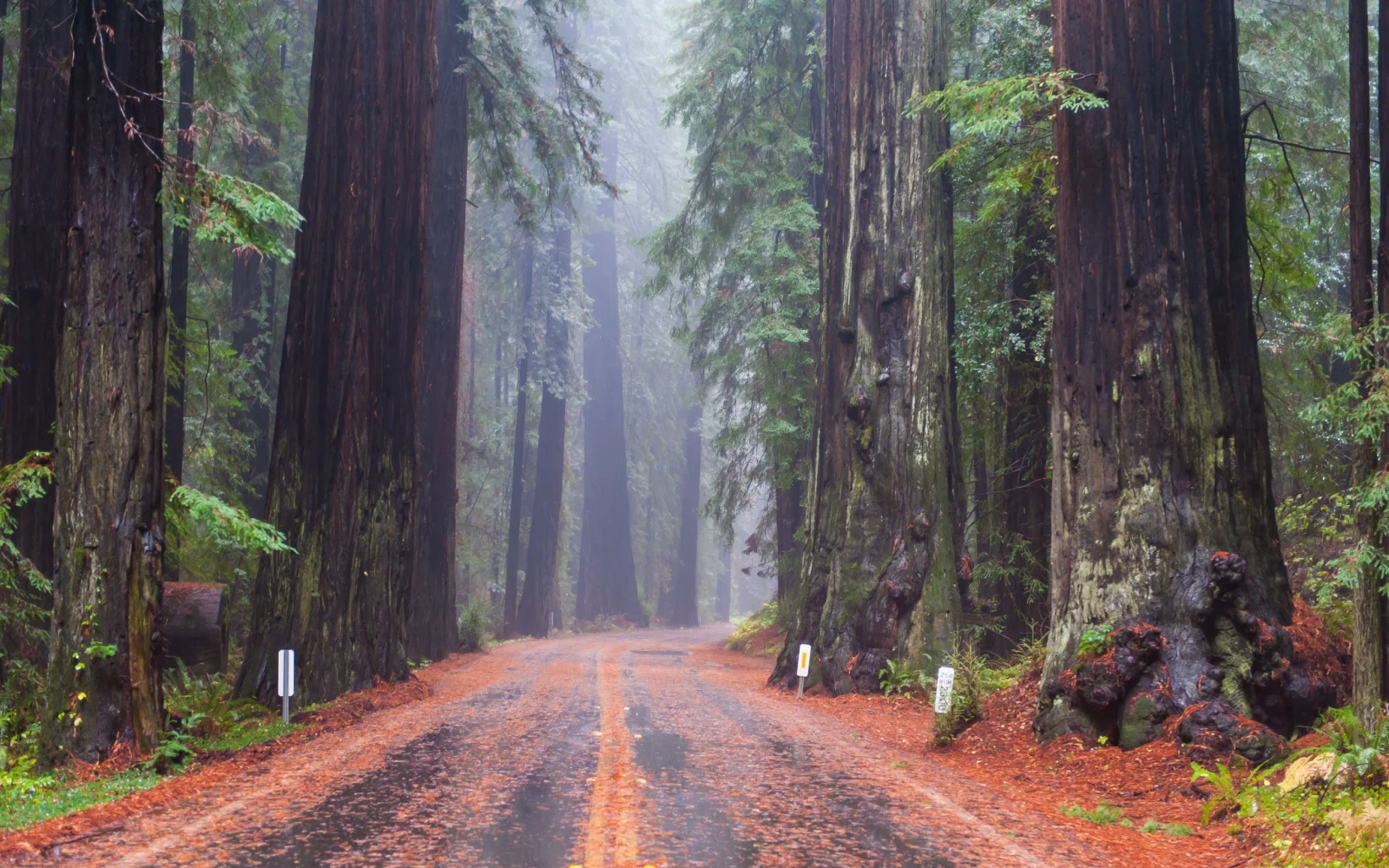What's the best time to visit Redwood National Park?
The best time to visit Redwood National Park is during the summer (June-August), when warm temperatures and low rainfall create perfect conditions for hiking, camping, and kayaking. Summer also offers a full schedule of ranger-led activities and cultural events like the Tolowa dance ceremony. Although popular areas can be crowded, the park’s expansive size typically allows for quieter experiences away from the busiest spots.
Redwood National Park in California is home to the world’s tallest trees and a must-visit destination for people that want to pay homage to nature’s majesty.
Besides the spectacular redwood groves, you can also explore scenic drives, go whale-watching along Enderts Beach, or go hiking among the trees, waterfalls, and wildlife. Spaces for overnight camping are also available.
Redwood National is one of the best parks in California and is absolutely worth visiting. This guide can help you plan your trip there, including when to go.
Overall Best Time to Visit Redwood National Park
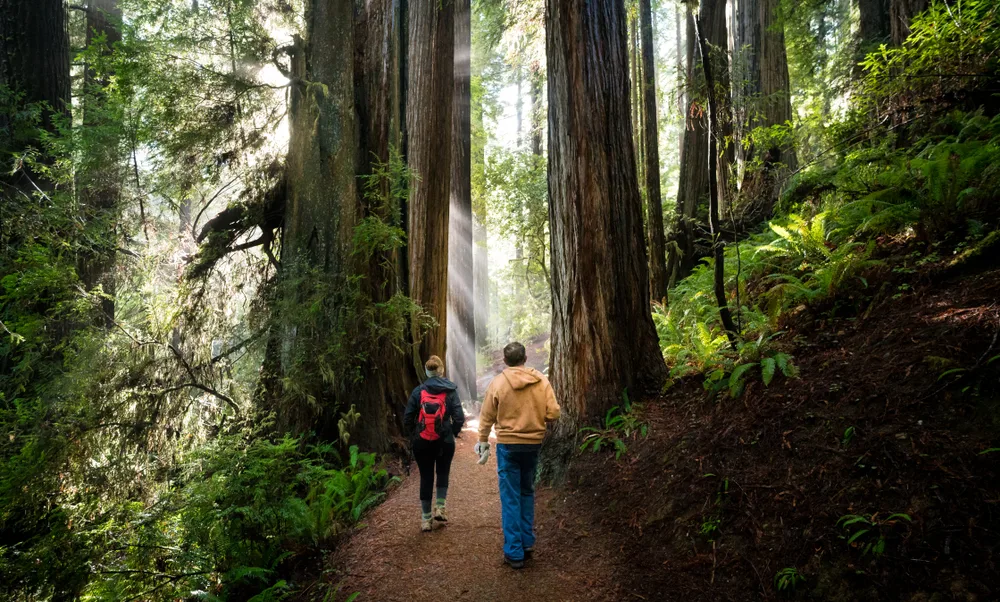
Ryan Kelehar/Shutterstock
The best time to visit Redwood National Park is in the summer (June-August), when temperatures are warmest, and conditions are the best for spending time in nature.
The park generally has a mild climate, very typical of Northern California. Summer is the warmest season, although it almost never gets too hot in the park.
Average temperatures in July are usually below 70 degrees Fahrenheit. You will need to bring layers, especially if you are camping overnight, but at least it won’t be sweltering and unpleasant.
Perhaps more importantly, summer is the driest season. While most of the year is fairly rainy and misty, the summer months receive very little rain. July receives the least precipitation, just a half inch of rain.
This means great conditions for outdoor activities such as:
- Hiking
- Camping
- Bicycling
Many summer activities in Redwood National Park are only possible in the summer. For example, in the summer, rangers lead kayaking tours along the Smith River.
This gives you an opportunity to explore the park from a new perspective and try a new activity as the guided tours are friendly for beginners as well (although some summers, kayaking tours are canceled due to low water levels).
In fact, most ranger-led activities occur in the summer. The events calendar is busiest from mid-May to mid-September, when you can go on guided hikes, tidepool walks, campfire programs, and more.
Events geared at children such as junior ranger programs are also most common in the summer. In July, the local indigenous people, the Tolowa, host a dance ceremony that is open to visitors.
Visitors tend to flock to the tree groves, but the park actually has its own coastal area as well. Summer is a great time to hike along the coastal trail and explore the tidal pools.
The Pacific Ocean is chilly even during the warmest months but wading in the water is most fun in the summer. Like many other national parks, Redwood struggles with overcrowding in the summer.
Parking at the most popular areas, such as Fern Canyon and Tall Trees Grove, fills up very early and you need to reserve a parking permit online.
However, the park is big enough that it is easy to beat the crowds as long as you don’t have your heart set on parking in the most popular areas. Even in the summer, solitude is usually just a short hike away.
Cheapest Time to Visit Redwood National Park
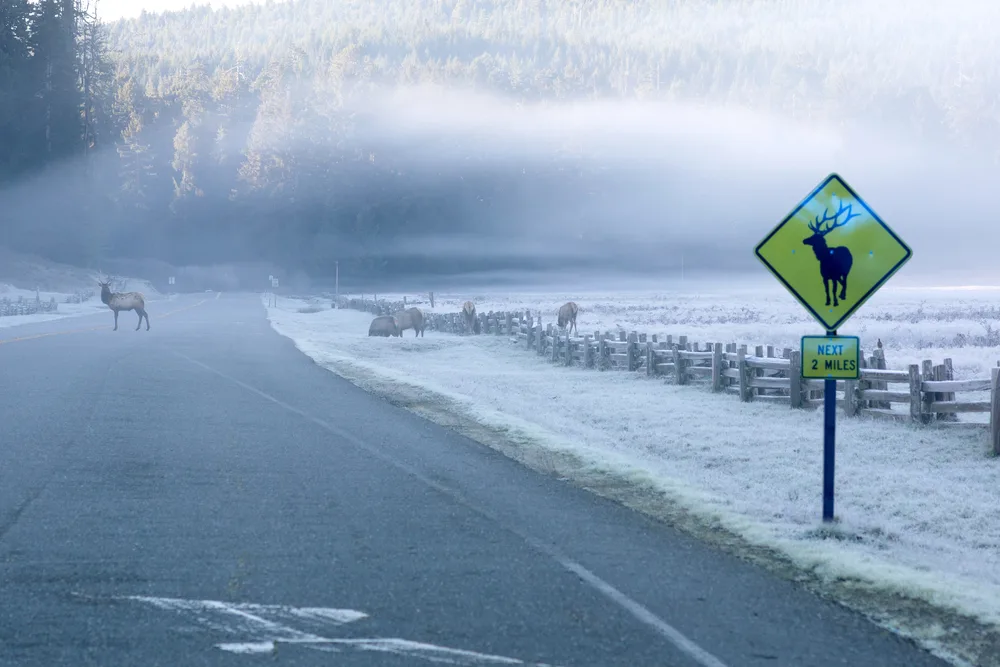
IrinaK/Shutterstock
The overall cheapest time to visit Redwood is in the winter. You can save some money on accommodation and transportation by visiting from December to February, when traveling in California is most affordable.
Many of the costs of visiting Redwood National Park are the same throughout the year. There is no entry pass for the park, so entering and parking is completely free no matter when you visit.
For camping (the only accommodation option in the park itself), you pay a fee of $35 no matter when you visit. Three out of the four campgrounds are open all year round.
If you want to stay in a hotel or motel, you will need to stay out of the park itself and in a nearby town such as Eureka, Arcata, Crescent City, or Trinidad.
Hotel rates in all of these towns tend to cost less in the winter, especially in January and February when the holidays are over. Expect savings of 15-20% compared to peak-season rates. Getting to Redwood National Park is also less expensive in the winter for out-of-state visitors who may need to fly.
Flights to San Francisco, which has the nearest major airport, cost the least from late October to late March. You can also negotiate a deal on a rental car since this is California’s off-season so there won’t be as much demand at the airport rental desk.
Least Busy Time to Visit Redwood National Park
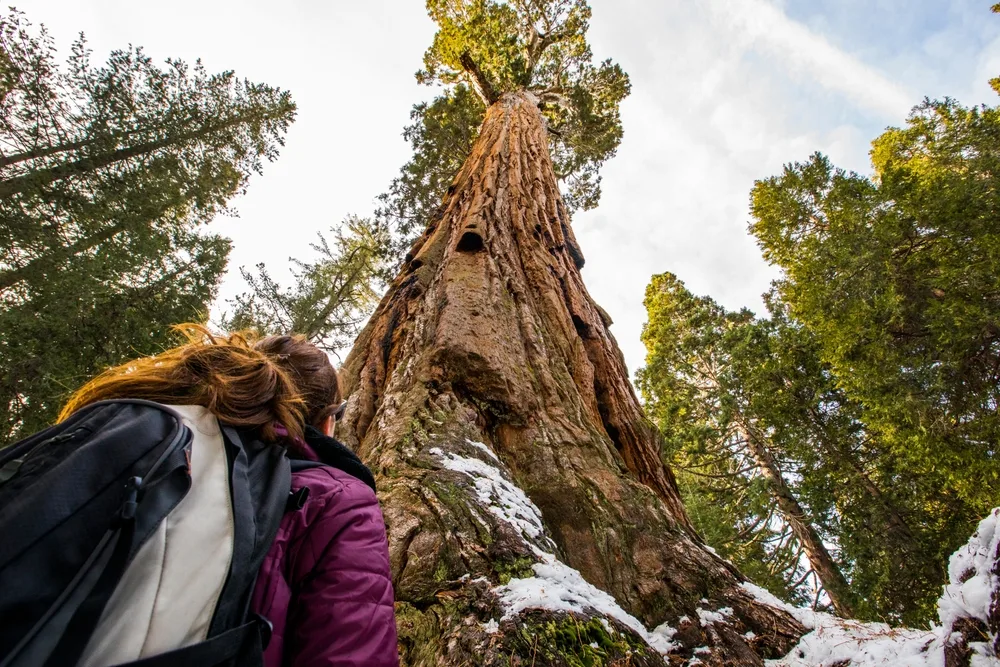
AlbertoGonzalez/Shutterstock
The least busy time to visit Redwood National Park is during the long off-season, from October to April. Once September ends, summer’s crowds disappear very quickly.
You no longer have to make advance reservations for developed campgrounds or for parking at popular areas such as Fern Canyon. As soon as the permit system is no longer necessary, that’s a sure sign that crowds are no longer around.
Things are a lot quieter as soon as fall begins in earnest in Redwood. There are far fewer ranger programs, and you can sometimes hike for ages without seeing another person.
However, this makes a visit to the national park feel more special than when there are crowds filling the redwood groves in the summer. The quieter fall, winter, and early spring bring changes to the landscape.
In fall, you can see the elk rut, one of nature’s most primal shows (just be sure to stay a safe distance away from the elk). Peak whale-watching season also coincides with the park’s off-season.
Gray whales migrate in November-December and March-April, and they are visible from the park’s coastal trails. You’ll probably need binoculars, but there’s no experience that can match the feeling of seeing a whale spout on your hike.
Worst Time to Visit Redwood National Park
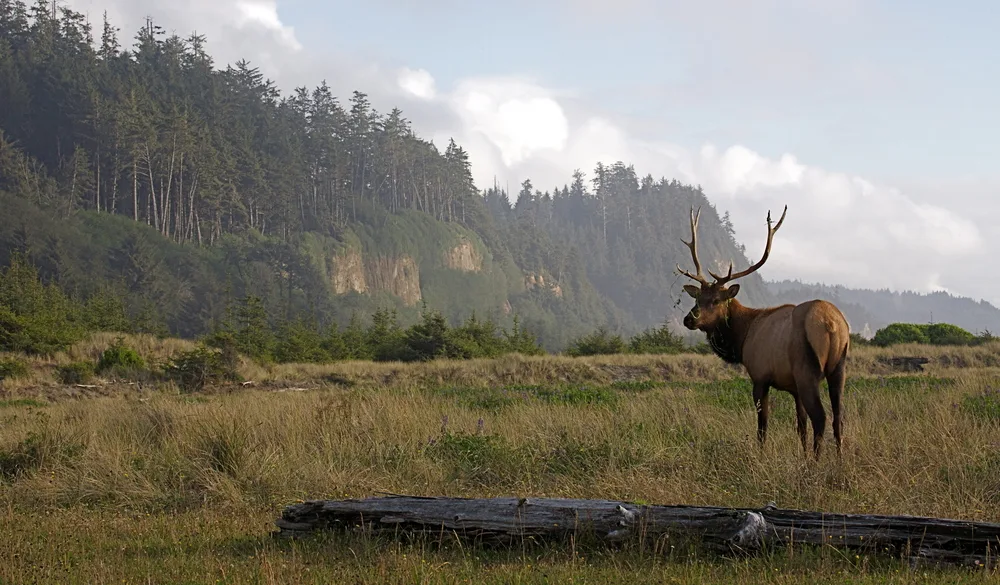
Tom Reichner/Shutterstock
The worst time to visit Redwood Park is in the off-season (October-April) and the summer peak season (June-August). The main problem with the off-season is the weather.
From October to April, Northern California is enveloped in a gray blanket of fog and persistent rain. It rains so much that some trails and roads in surrounding areas and in the park itself flood or turn into mud.
Temperatures are also chilly, ranging from 54-59 degrees Fahrenheit during fall, winter, and early spring. However, there are some benefits to coming at this time.
As mentioned above, the off-season brings more affordable accommodation prices and fewer crowds. There is also some charm to visiting during the foggy, gray winter. The landscape looks even more majestic when surrounded by mist.
On the other hand, some people dislike visiting during the peak of summer due to the heavy crowds.
People crowding the redwood groves and popular areas lead to disappointed visitors (and countless hours waiting for a parking spot). If you don’t like crowds, summer isn’t the season for you.
However, even during the peak of summer, crowds tend to be concentrated in a few small areas of the park. Trying out different trails is a good way to beat the crowds. You can also find more tips for avoiding crowding on the official website.
Frequently Asked Questions
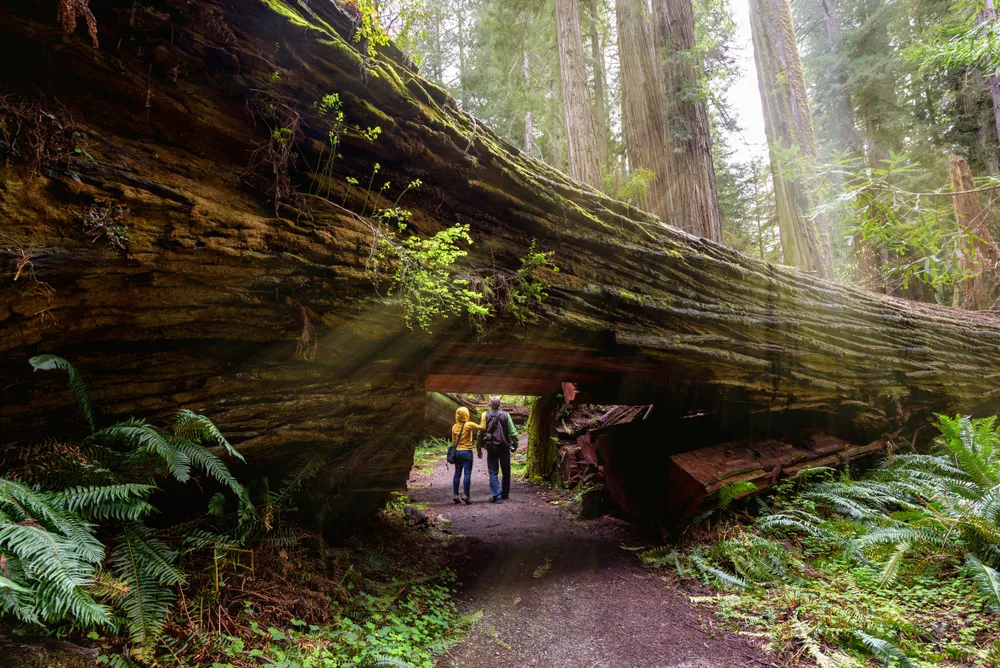
Yaya Ernst/Shutterstock
Here are a few additional tips to help you plan your trip to Redwood National Park:
When are the best months to visit the redwoods?
June or July are the best months to visit the redwoods because they have the lowest chance of rain. However, the redwoods are beautiful all year long, so any time of year is a good time to go.
How many days do I need to see Redwood National Park?
You can see the most important sites in Redwood National Park in one day. If you want to go on longer hikes, spend at least three days in the park.
When is the best weather for the redwoods?
The best weather for the redwoods is in the summer, when temperatures are warmer, and it isn’t rainy. The climate is cool and temperate all year long.
Is Redwood National Park worth it?
Redwood National Park is worth visiting since it has some of the most spectacular trees found anywhere in the world. The trails are also beautiful, well-maintained, and not crowded compared to other California parks.
Should I visit Sequoia or Redwood?
Both Sequoia and Redwood are great parks with great trees, so choosing which one to visit will depend entirely on convenience. Redwood is easier as a trip from San Francisco, while Sequoia is closer to southern California.
So, What’s the Best Time to Visit the Redwoods?
The best time to visit Redwood National Park for good weather is during the summer, from June to August. May and September also have good weather and little rain, but more manageable crowds, while you can find pleasant solitude during the off-season from October to April.
So, with so much to see and to and plenty of amazing times to visit, what are you waiting for — book your trip today and experience for yourself all that Redwood has to offer. Happy travels!



